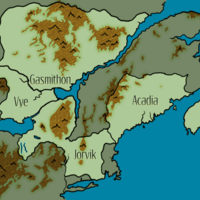Tatzelwurm
There were serpents in the earth long before there were gardens. Skulls full of dull hatred basked in the blind sun and claws slashed scales aeons before the first vine rooted in Babylon. In the tatzelwurm Thaia-thaan’ag has sought to bring some measure of that immemorial malice slouching into the meek, soft present.
Coiled, the beast is about as large as a wolf. Tiny, tawny feathers cover its head and back, while sleek white ones run down its jaw and belly, and darker ones shadow its eyes and nostrils. All told its plumage blends into the drab colors of its favored hunting grounds - boulder-strewn hills, dry autumn meadows, and oaken underbrush.
Coiled, the beast waits. Patient and hungry as a ghost called from a time before mercy. When food strays close, the tensed, springy body surges forward, propelled by strong but stumpy hind legs. Midair, forearms unfurl ungodly talons, barreling the quarry to the ground as the back legs fold. The scything claws and constricting tail bleed down even large prey quickly.
Tatzelwurms are the last of the cult’s creations to burrow into the muck for winter, and one of the first to emerge in the spring, thanks to their insulating feathers and lethargic lifestyle. A common rite involves a disciple luring a tatzelwurm to a pass or camp in one of these seasons when trade is most crucial, and there giving their life to the beast so it claims a hunting ground.
